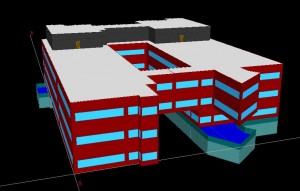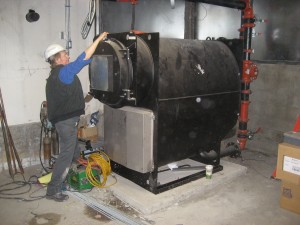What is light pollution? It's light that goes where it is not useful. The human race evolved with dark skies at night. The advent of electrification has lead to a proliferation of nighttime lighting that we use to help us find our way and to increase our security in the dark.
The Problem
Unfortunately our approach has been to throw lots of electric energy away by lighting the sky as well as the areas we seek to illuminate. Light flows without restriction across property lines, we bounce light up off parking lots and roadways, and in some cases outdoor areas are illuminated to levels that allow people to read outside at night. While all of this light may give us a sense of security, it is affecting our health, the health of the ecosystems in which we live and is obliterating our connection with the night sky.
I am fortunate to live on a dirt road in Vermont. While I’m only 12 miles from Burlington, Vermont’s largest city, I can walk down my road on a clear night and see the Milky Way. But, as I look to the north, the sky is aglow with the reflected light from Burlington’s night cityscape. And, the use of night lighting is rapidly expanding out from the city into the suburbs and rural surrounds. Views of the Milky Way have been lost to most Americans and it is rapidly fading from view for the rest of us!
The Solution
We have the power to take back the night sky without risk to property or safety. Here is what is required:
- Shine night light where it is needed. Flood lights shoot light straight out into space without shielding. This creates glare, which is proven to REDUCE the effectiveness of night lighting. Use shielded lights that shine light directly onto paths, doorways or other targets, without flooding the area and blinding people who are approaching or passing the site.
- Only use as much light as required. The human eye and brain evolved with dark nights. We actually see amazingly well at night when there are not bright lights all about. Keeping night light levels low allows people to see more naturally at night using our peripheral vision. Low light levels minimize the amount of light that gets reflected into the sky off of the ground.
- Control lights so they are normally off. Studies have shown that occupancy-based control of security lighting INCREASES its effectiveness. If your site requires security lighting, use occupancy sensors to reduce light pollution and increase security. Imagine this scenario – the local school and its ground are illuminated by flood lights whenever it is dark. The neighbors and the police are accustomed to the high light levels and vandals can easily hide in shadows. The same lighting, normally controlled off, provides a clear indication when someone is in the area. The neighbors will pay attention when the lights go on and the local police will be alerted to inspect the site more closely for miscreants. Keeping the lights off most of the time makes the area less attractive to vandals!
There are numerous web-based resources on the health and environmental impacts of night lighting as well as resources for how to improve our practices. LEED includes credits for appropriate night lighting. Recapturing the energy we are currently throwing away with poorly designed night lighting is an easy first step in reducing the environmental impact of the developed world.
Image courtesy of International Dark-Sky Association
Related articles
- Look Up at the Night Sky For a Change - video (ecology.com; TED video)
- Where Are The Darkest Skies in the World? (unastronomy.com)
- Too Bright, the Night: New Film Tackles City Light Pollution (far2fresh.com)
- Dark Skies (acrosstheuniverseinnotime.com)



